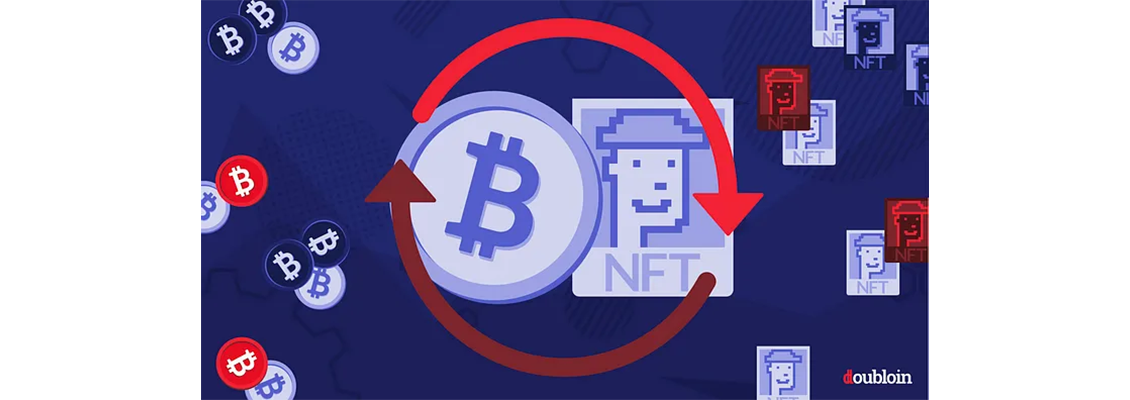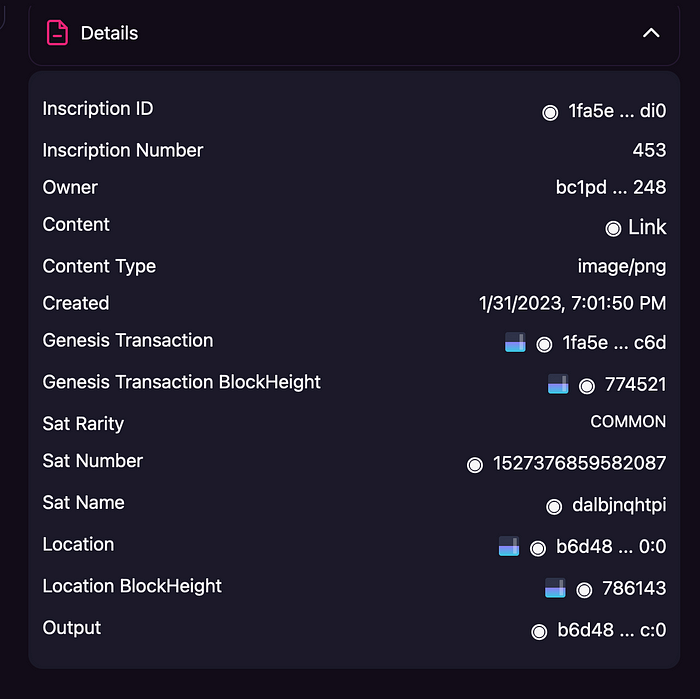
While non-fungible tokens (NFTs) have traditionally been minted and traded on platforms such as Ethereum, Solana, and BNB Smart Chain, the Bitcoin blockchain has recently entered the NFT space with the introduction of the Ordinals project.

Despite the challenges of modifying Bitcoin’s code and launching new features, the growth of the crypto ecosystem has paved the way for innovative minds and BTC enthusiasts to develop Bitcoin’s version of NFTs as part of the future of Web3.
What Are Bitcoin Ordinals?
The Ordinals protocol is a system for numbering satoshis, giving each satoshi a serial number and tracking them across transactions.

The protocol allows users to make individual satoshis unique by attaching extra data, a process known as “inscription.” Each satoshi, named after Bitcoin’s creator Satoshi Nakamoto, is the smallest denomination of bitcoin (BTC), with 100,000,000 satoshis making up a single BTC.
Unlike traditional NFTs, which are typically created using smart contracts on other blockchains, ordinals are inscribed directly onto individual satoshis, which are then included in blocks on the Bitcoin blockchain.
This allows ordinals to reside entirely on the blockchain, inheriting Bitcoin’s simplicity, immutability, security, and durability.
Ordinal Theory and Inscriptions
In the context of Bitcoin, Ordinal Theory is a proposed methodology invented by developer Casey Rodarmor for identifying each satoshi via a serial number and tracking them from their initial minting through their entire life of transactions.

This process, referred to as “inscription,” results in ordinal inscriptions that are digital assets similar to NFTs.
The Taproot upgrade, launched on November 14, 2021, made this process possible, eliminating the need for a sidechain or separate token.
Rarity and Collectibility of Ordinals
Ordinal Theory enables the tracking and transfer of individual satoshis, opening up the possibility of collecting them.

Based on the total supply of Bitcoin, different ranks have been assigned to denote the rarity of certain satoshis:
- Common: any sat other than the first sat of its block (2.1 quadrillion total supply).
- Uncommon: the first sat of each block (6,929,999 total supply).
- Rare: the first sat of each difficulty adjustment period (3437 total supply).
- Epic: the first sat after each halving (32 total supply).
- Legendary: the first sat of each cycle* (5 total supply).
- Mythic: the first sat of the genesis block (1 total supply).
*A cycle represents the period between conjunctions, which occur when a halving and a difficulty adjustment coincide. In theory, this happens every six halvings, but the first conjunction is yet to occur (expected in 2032).
The Pros and Cons of Bitcoin Ordinals
The Ordinals protocol has created a new use case for the Bitcoin network beyond simple transfers of value.

However, it has also sparked controversy within the Bitcoin community, with some arguing that Bitcoin’s simplicity should be preserved. In contrast, others believe it should evolve to include new features and use cases.
Inscribed satoshis now compete for block space with regular BTC transactions, increasing network fees. Some Ordinals supporters argue this could be positive, as fees are a crucial incentive for miners to secure the blockchain.
In the future, as block rewards dwindle, network fees will become the primary incentive for committing hash power to Bitcoin.
The Future of Ordinals
Bitcoin Ordinals are revolutionizing the world of blockchain art by offering a novel way to store information on Bitcoin transactions.
They not only add extra utility but also contribute to an all-time high in the number of non-zero Bitcoin addresses. We are witnessing a unique moment in Bitcoin’s history, where innovation drives network activity beyond traditional use cases such as investment and monetary transfer.

However, the future of Ordinals is not guaranteed.
While they represent an innovative and groundbreaking development within the crypto space, their continued growth and success depend on the broader community’s acceptance and support.
The debate surrounding the implications of Ordinals for the Bitcoin network and the potential impact on transaction fees remains ongoing.
As cryptocurrency and blockchain technology continue to evolve, only time will tell whether Ordinals will become a widely adopted and integral part of the Bitcoin ecosystem.
About The Rare Network
The Rare Network is a dynamic and growing organization that bridges the gap between traditional industry and emerging blockchain technology.
Our flagship event, Rare Evo, is the premier blockchain conference that brings together multi-chain projects, industry leaders, investors, and enthusiasts.
Rare Evo isn’t just a convention. It’s an immersive experience set in Denver, Colorado. We’ve got everything from educational sessions and networking opportunities to interactive experiences and live entertainment.
Hosted at the stunning Gaylord Rockies Resort, our luxurious and family-friendly venue ensures there’s something for everyone.
Don’t miss out on this game-changing event!
Buy your tickets, book your hotel room, and join the Web3 revolution.
Remember to stay connected with us on Twitter, YouTube, and Discord for the latest updates.

Leave a Comment